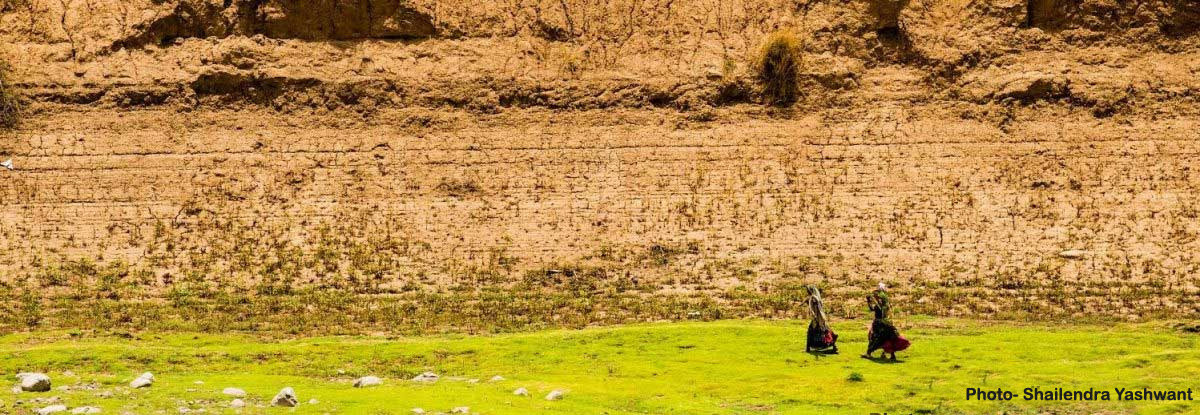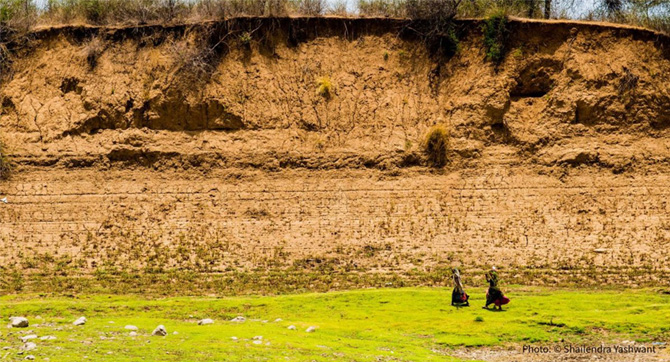Climate Induced Displacement & Migration in South Asia

By 2050, more than 200 million people will be forced to flee their homes due to climate change.
Climate change has contributed to melting ice sheets, rising sea levels, and desertification. It has led to more frequent and stronger weather-related extremes such as storms, floods, droughts, and wildfires. Threats to people’s lives, physical and mental health, food and economic security are, however, unevenly distributed and exacerbate existing vulnerabilities and inequalities. Generally, countries with fewer resources and people in precarious situations bear a disproportionate burden.
Climate-induced migration and displacement is falling between the policy gaps. Existing international frameworks and national policies are yet to make the crucial link between climate change impact on the frequency and intensity of extreme climate events, environmental degradation and human mobility.
This is partly because although migration and climate change have a significant relationship, it is extremely difficult to disentangle and quantify. However, it is clear that the numbers of climate-induced migrants will increase.
Global agreement to address climate-induced migration and displacement is needed. A comprehensive approach would address the need for assistance, protection and durable solutions for those displaced by climate change, manage climate risks for those remaining and support opportunities for voluntary migrants adapting to climate change.
Drawing from participatory research undertaken in five South Asian countries (Bangladesh, India, Nepal, Pakistan and Sri Lanka)on issues intersecting with displacement and distress migration, Climate Action Network South Asia
(in collaboration with its members) and ActionAid, funded by Bread For The World studied the phenomenon of climate induced migration in South Asia and its impacts on the poorest of the poor.
The country-level research of CANSA in South Asian countries shows that climate change is either directly displacing people or accentuating hardship resulting in distress migration. Climate mitigation and adaptation efforts along with policy responses – nationally, regionally as well as globally are urgently needed to secure humanitarian rights and social legal protection for the displaced people.
To access copies of the reports on our website:
SRI LANKA : Is Climate Change Fueling Migration in Sri Lanka
NEPAL : Migration in Nepal Through the Lens of Climate Change
BANGLADESH : Climate-Induced Displacement and Migration in Bangladesh
BANGLADESH : Addressing Climate Change Induced Displacement and Migration in Bangladesh
PAKISTAN : Climate-Induced Displacement and Migration in Pakistan
INDIA : Climate Induced Displacement and Migration in India
AFGHANISTAN : Climate change drives migration in conflict-ridden Afghanistan
REGIONAL : Costs of Climate in Action: Displacement and Distress Migration
REGIONAL : Climate change knows no borders
REGIONAL : Climate migrants pushed to the brink
REGIONAL : Invisible women:A gender analysis of climate-induced migration in South Asia
REGIONAL : Roadmap to a framework for the protection of Climate Migrants
REGIONAL: Participatory Research on Climate-induced Migration and Displacement
Contact Person
Rushati Das (rushati@cansouthasia.net)





